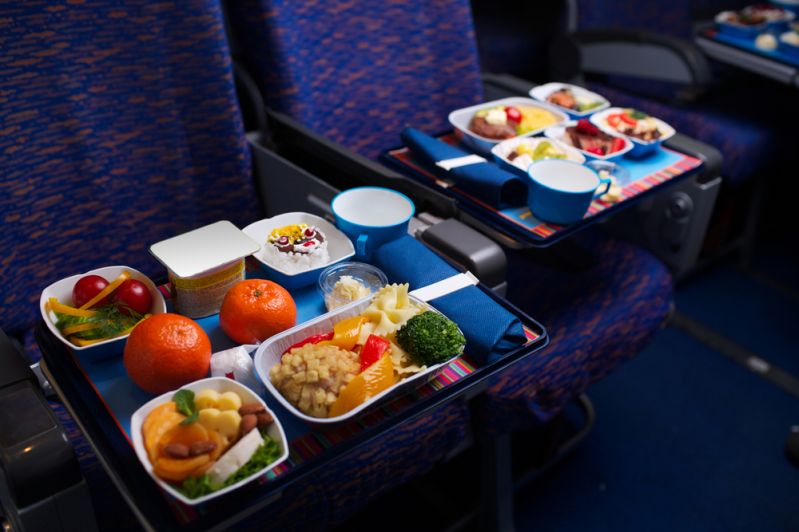
Carry-On Baggage: What You Can & Can’t Bring on a Flight
According to the TSA, you can bring biological specimens in your carry-on but not a bicycle chain. You can bring hard, aged cheddar on board, but you’ll have to leave the brie behind.
You’d think that by now most air passengers would have a handle on what they can and can’t bring aboard a flight, but here we are still asking questions and sussing out the answers. Of course, there are some interesting intricacies in carry-on bag policies that elude even the most seasoned traveller.
So, in this article, we’re going to unravel these intricacies to give you a comprehensive guide on what you can and can’t bring in your airline hand baggage and what you can’t.
Who Makes the Rules For Hand Baggage
Carry-on luggage, hand baggage - whatever you choose to call it, the bags you carry into an aeroplane cabin are subject to the rules and regulations of a few different governing bodies.
Individual airlines and the International Air Transport Association (IATA) both have a say in determining the size of allowable carry-on bags, but the exact dimensions will depend on the aircraft and seating class. As for the contents of the bags, this depends on the country or region you’re where you’re travelling.
In the United States, the Transportation Security Administration (TSA) works to enforce the rules on what can go into a carry-on bag, while the IATA and the European Commision help regulate the rules for hand baggage in the European Union (EU).
In the UK, the Civil Aviation Authority (CAA) is responsible for enforcing the rules on carry-on baggage, while in Canada, the regulations are governed by CATSA - the Canadian Air Transport Security Authority.
Items Allowed in Your Carry-On
Some items are allowed in your hand luggage, others are only allowed in a checked bag, but there’s a third list of things you can’t bring with you on the plane at all. In this section, we’re going to look at some of the items passengers frequently ask about.

Liquids and Gels
As a general rule, any non-flammable gels, aerosols, and liquids can be packed, as long as they come in small quantities of 3.4 ounces or less and all the liquid and gel like products must be packed in one, quart-sized, clear and zippered bag.
The EU, UK, and Canada have similar restrictions for liquids and gels in carry-on bags.
These can include any of the following:
- Medicine in liquid form (Like cough syrup, insulin, or any other medically necessary fluid, gels, or aerosols)
- Perfume
- Shampoo, conditioner, and other hair products
- Makeup
- Aerosols (deodorant, hairspray)
- Gels like hair gel, toothpaste, moisturisers
- Contact lens solution
- Baby food and breast milk

Baby and Toddler Items
Fortunately, in the US, UK, EU, and Canada, the items you need to care for toddlers and babies are allowed in your carry-on, and they are exempt from the 3-1-1 rule (3.4 ounces, 1 bag, 1 person), but remember to tell the security screeners about these items as you unpack them for your security check.
You can pack the following baby items in your hand baggage
- Breast milk
- Gel-filled soothers
- Formula
- Baby food in cans and jars
- Car seats
- Carriers
- Wipes
Batteries
The perennial question about batteries continues!
The TSA and EU, UK, and Canadian regulations say that batteries are fine in your carry-on bag as long as they are non-lithium dry batteries and packed so that they won’t be damaged or create heat or sparks.
As far as size is concerned, you can bring a button cell, 9-volt, C, D, AA, and AAA. Loose lithium batteries must always be in your carry-on and never packed in your checked luggage.
Batteries with more than 160 watt hour (Wh), however, are generally not allowed in hand baggage.
Electronics
Most portable electronic devices are allowed in your carry-on bag. This can be anything from tablets to electric razors to hair dryers and curling irons as long as they have a safety cover and are protected from turning on accidentally.
Drones are a special case. They will get through security screening, but individual airlines will have their own rules about carrying these on board.
E-cigarettes & Vaping
Interestingly, while vaping and smoking are strictly prohibited on the plane, laws in the US, EU, UK, and Canada actually require passengers to pack these items with them in their carry-on bag as they’re not allowed to be in hold luggage. In fact, the Federal Aviation Administration prohibits e-cigarettes and vapes from checked luggage.
Sharp Items
Anything sharp needs to be carefully considered when you’re packing, but here are commonplace items you can pack in your hand-luggage without a problem.
What you can bring in your hand baggage
- Scissors less than 4 inches long from the pivot point. (If you pack these in your checked baggage be sure to pack them in a way to protect baggage handlers from being injured.)
- Knitting and sewing needles
- Safety pins
- Tweezers
- Disposable razors
- Crochet hooks
- Nail clippers

Food
Dry foods are generally allowed in your carry-on bag. But depending on where you’re travelling you might be prevented from bringing certain foods like fruits, vegetables, meat, or dairy into the country. So, unless you plan to eat them during your flight, you might need to check with your destination country on what is and isn’t allowed.
As a rule, you can even bring foods in your carry-on that are in between solid and liquid as long as they are 3.4 oz or less. So, if you’re thinking of bringing yoghurt, peanut butter, apple sauce, or pudding, be sure you follow the rules for liquids.
Firearms & Ammunition
An obvious no, right? Nonetheless, TSA still found 6,737 firearms in their security checkpoints in 2023 alone. Ammunition and firearms are absolutely not permitted on board in the US, UK, Canada, and EU. This includes BB guns, cap guns, and flare guns.
The only firearm-related items you can bring in your carry-on luggage in the US are a rifle scope and an empty holster, but that’s it. Otherwise, all firearms must be packed according to the rules of the country, declared, and stowed in checked baggage only.
Sports & Outdoor Equipment
Most sport and outdoor gear is ok to bring on board the aircraft as long as it isn’t something that could hurt someone. It’s important to note that.
What you can bring in your carry-on
- Yoga blocks
- Golf balls
- Riding spurs
- Crampons (but check with your airline)
- Gold tees
- Helmets
- Pickleball paddles
- Skateboards (but check for size limitations)
- Skates
- Fishing lures
- Umbrellas (as long as they fit size requirements)
What you can NOT bring
- Walking sticks
- Tent spikes
- Ski poles
- Snow cleats
- Spear guns
- Pool cues
- Snow shoe spikes
- Hiking poles
- Hockey sticks
- Cricket bat
- Golf Clubs
- Bowling Pins
- Kayak Paddles
- Bear spray
- Aerosol insecticide
Items You Should Always Keep in Your Carry-On Bag
If you plan to check your luggage, remember to keep certain items with you in case your baggage is lost or delayed. Cash, fragile items, important documents, jewellery, and any valuable and cherished items should always be kept with you. Also, remember to pack medications, a change of clothes, and some basic toiletries in your carry-on bag so that if your checked baggage goes missing or if you have long delays, you’ll have your basics to hold you over.
Speaking of delays, did you know you could claim up to 600 EUR in compensation for delayed flights? Just enter your flight details below to see how much you could receive.
No feedback
Leave your feedback
We don’t spam.

